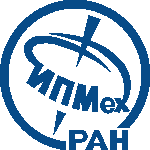
|
ИСТИНА |
Войти в систему Регистрация |
ИПМех РАН |
||
Experimental Geophysical Detection of Spatial and Temporal Variability of Urban Soil Propertiesстатья
Статья опубликована в журнале из списка Web of Science и/или Scopus
Дата последнего поиска статьи во внешних источниках: 22 мая 2025 г.
- Авторы: Bricheva S.S., Shilov P.M., Yurchenko A.P., Tarasova M.A., Matasov V.M.
- Журнал: Eurasian Soil Science
- Том: 25
- Год издания: 2025
- Издательство: Maik Nauka/Interperiodica Publishing
- Местоположение издательства: Russian Federation
- Номер статьи: 74
- DOI: 10.1134/S1064229324603780
- Аннотация: The high variability of properties in urban soils and the abundance of anthropogenic inclusions that interfere with the propagation of electromagnetic fields are the reasons why they are seldom studied by geophysics. At the same time, geophysics is an efficient and fast way to diagnose soil structure and dynamics without affecting the functioning of the place, which is crucial when working in the city. In order to conduct a geophysical study of soils in the city, it is necessary to establish experimentally the relationship of electromagnetic properties with soil texture, moisture content, organic matter content, volume density of solid mineral matter, and some other characteristics of the soils. The purpose of our study was geophysical detection of spatial and temporal variations in urban soil properties using a lawn in Moscow as an example. Along with classical methods of soil description in reference pits and boreholes, we used ground-penetrating radar, electrical resistivity tomography, and electromagnetic induction methods in different seasons. To improve the accuracy of interpretation of geophysical data we analyzed the physical properties of soil horizons: particle size and water content, as well as electromagnetic parameters: complex dielectric permittivity and electrical resistivity. The integrated approach allowed to identify soil boundaries with a coefficient of determination of R2 = 0.54–0.88 and an error of 10 cm, to offer their interpretation and to study the seasonal dynamics of electromagnetic properties indirectly related to soil moisture.
- Добавил в систему: Бричева Светлана Сергеевна
Прикрепленные файлы
| № | Имя | Описание | Имя файла | Размер | Добавлен |
|---|